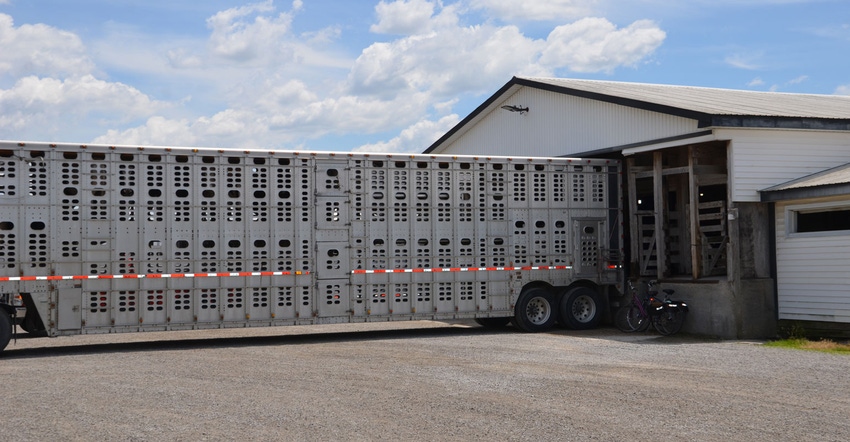September 12, 2022

Today, owners of a livestock auction market can’t own or have interest in meatpacking facilities or a meatpacking business — even small, country butchering facilities. However, meatpackers can buy and own livestock auction markets. In fact, a packer can legally own, finance or align itself with feedyards. And a packer can buy a livestock market auction, close it down and use the facility as a buying station. Sellers who bring livestock there accept the packer’s price that day without the transparency of true price discovery.
Mark Barnett doesn’t believe that’s fair. Barnett is the current president of the Livestock Marketing Association, Overland Park, Kan., with member auction markets across the country, including in Indiana. Barnett recently shared his thoughts in an editorial.
“You can’t tell me that doesn’t feel like a double standard, with livestock auctions being subject to a different set of rules than other businesses in our industry,” he writes.
There seems to be a rash of double-standard thinking across the country these days. This certainly sounds like another classic example.
How it happened
The current federal law that prohibits the owners of livestock markets from also owning or aligning with local or regional meatpackers was well-meaning when it was created. And it served a purpose. But that was a century ago. Several things have changed in 100 years.
In 1921, when the current Packer & Stockyards Act passed Congress, terminal stockyards such as those in Chicago, Omaha and Indianapolis lacked separation between buying and selling agents. Farmers often hired someone else to haul livestock to the stockyards or shipped them by rail. A commission company sold livestock to representatives of packers, for a fee paid by the farmer. Slaughter facilities were often located alongside the stockyards. The process wasn’t always transparent, especially to the farmer, who typically wasn’t even there.
Barnett points out that terminal stockyards have disappeared. Instead, many animals are sold through livestock auctions in sale rings with live auctioneers and buyers. More buyers mean more competition, which should mean a better price for the seller. In many cases today, if the farmer or rancher can’t attend the sale, he or she can watch online.
Seeking solutions
Barnett’s main point is that if livestock auction markets could own and/or align with local or regional packers, it could mean another bidder and more competition on auction day. The producer should stand an even better chance of getting the price deserved for his or her livestock.
A remedy is in the works, and that’s why Barnett penned his editorial. The Amplifying Processing of Livestock in the United States, or A-Plus Act, known as H.R. 7438, and its companion bill in the Senate, the Expanding Local Meat Processing Act, S. 4709, would allow livestock auction owners to also own or invest in small and regional packing plants. The bills include provisions so large packers could not operate livestock markets. At the same time, auction markets couldn’t own or invest in packing plants over a certain size.
While these bills require scrutiny, we’re all for change that eliminates double standards and levels the playing field. Livestock production has changed since the days pigs wallowed in mud. If discrepancies exist, it’s time laws governing how hogs and cattle are sold change, too.
Comments? Email [email protected].
You May Also Like




